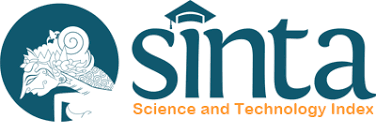BUILDING MUTUAL COOPERATION AND ACTIVATE THE ROLE OF LOCAL LEADERSHIP
PENTAHELIX'S STRATEGY FOR HANDLING THE IMPACT OF COVID-19
DOI:
https://doi.org/10.14203/jmb.v23i1.1203Keywords:
Keywords: Social capital, mutual cooperation (gotong royong), local leadership, resilience, Covid-19.Abstract
The Covid-19 pandemic has plunged Indonesian society and high socio-economic vulnerability. The government through policies and programs tries to overcome the impact of the pandemic and restore people's lives. Many other parties have contributed to handling the pandemic, but they are still sectoral. In its implementation, there is still a role gap, especially the role of the government is more prominent, while the participation of various parties, especially the community is still minimal. In fact, these steps have not yielded maximum results. This can be seen from the increasing number of pandemic exposures. One of the strategies for handling a pandemic that is quite effective is the effort to accommodate social capital within the pentahelix framework. This study shows that mutual cooperation and local leadership are the dominant features of social capital practices in Indonesia. In this case, the practice of mutual cooperation, both in an organic and systematic sense, is a thread of synergy and integration among stakeholders. Therefore, packaging and strengthening social capital in policies with the pentahelix framework is the "ultimate arrow" in handling the Covid-19 pandemic.
Downloads
References
Hardiman, F. B. (2018). Demokrasi deliberatif. Jakarta: Gramedia.
Haridison, A. (2013). Modal sosial dalam pembangunan. (Skripsi) JISPAR FISIP Universitas Palangka Raya.
Humaedi, M. A. (2020). Mendampingi kaum muda pada program urban nexus di musim pandemi covid-19. Jakarta: YKRI dan Yayasan Plan Indonesia.
Humaedi, M. A.. (2012). Di rumah-Mu kami berlindung: Peran masjid dalam penanganan bencana. Jakarta: UNOCHA.
Lees, J. (2020). Double disaster: Emergency preparedness in the era of Covid-19. Diakses dari https://www.lowyinstitute.org/the-interpreter/double-disaster-emergency-preparedness-era-covid-19.
Mubyarto. (2002). Kemiskinan masyarakat pedesaan. Yogyakarta: UGM Press.
Narayan, D., & Pritchett, L. (1999). Cents and sociability: Household income and social capital in rural tanzania. Economic Development and Cultural Change, 47(4), 871.
Pelling, M., & High, C. (2005). Understanding adaptation: What can social capital offer assessments of adaptive capacity?. Global Environmental Change 15(4), 308–319. Doi: 10.1016/j. gloenvcha.2005.02.001. Dalam Putnam, R. D. (1995). Bowling alone: America’s declining social capital. Journal of Democracy, 6(1), 65–78.
Sirovatka, T., & Mares, P. (2008). Social exclusion and forms of social capital. Czech Sociological Revie., 44(3), 531–555.
Smit, B., & Wandel, J. (2006). Adaptation, adaptive capacity and vulnerability. Global Environmental Change, 16(3), 282–292. Doi:10.1016/j.gloenvcha.2006.03.008.
Tessa, A. (2020). Worldview masyarakat dalam menghadapi bencana gunung merapi. (Skripsi). Universitas Negeri Yogyakarta.
Usman, S. (2018). Modal sosial. Yogyakarta: Pustaka Pelajar.
Wijaya, et al. (2019). Pemanfaatan modal sosial dalam penguatan desa tangguh bencana. Jurnal Pengabdian Kepada Masyarakat Membangun Negeri, 2(1).
Woolcock, M. (2001). The place of social capital in understanding social and economic outcomes. Isuma, Canadian Journal of Policy Research, 2(1). Diakses tanggal, bulan, tahun dari https://www.worldometers.info/coronavirus/country/indonesia/.
Published
Issue
Section
Copyright (c) 2021 Muhammad Alie Humaedi, Sri Sunarti Purwaningsih, Letsu Vella Sundari, Rusdyan Fathy

This work is licensed under a Creative Commons Attribution-NonCommercial-NoDerivatives 4.0 International License.
Authors who publish with this journal agree to the following terms:
- The copyright for articles in this journal is retained by the authors.
- Authors grant to the journal first publication rights and the right to distribute the article, including the journal's web site, online data bases and other similar forms.
- Authors agree to license their work according to Creative Commons Attribution-NonCommercial-NoDerivatives 4.0 International License.
- Articles published in JMB are free to use for non-commercial uses as long as the authors and the journal are attributed properly and the new creations are licensed under the indentical terms (license Creative Commons (CC BY-NC-ND 4.0).
- Authors retain the right to reproduce and distribute their articles in any format, without prior authorization, with the proper acknowledgment to the first publication.
- If the article contains copyright material owned by others, authors should obtain written permission from the copyright owner/s in order to reuse the material. Appropriate acknowledgment should be included.
- Authors are encouraged to post their article online (in institutional repositories, personal websites etc). Any such posting must include a reference and a link to the journal's website.
Penulis yang menerbitkan pada jurnal ini menyetujui ketentuan berikut:
- Hak cipta untuk artikel dalam jurnal ini disimpan oleh penulis.
- Penulis memberikan kepada jurnal hak publikasi pertama dan hak untuk mendistribusikan artikel, termasuk situs web jurnal, basis data online dan bentuk serupa lainnya.
- Penulis setuju untuk melisensikan karya mereka sesuai dengan Creative Commons Attribution-NonCommercial-NoDerivatives 4.0 International License.
- Artikel yang diterbitkan dalam JMB bebas digunakan untuk penggunaan non-komersial selama penulis dan jurnal dikaitkan dengan benar dan kreasi baru dilisensikan menurut istilah indentis (lisensi Creative Commons (CC BY-NC-ND 4.0).
- Penulis mempertahankan hak untuk mereproduksi dan mendistribusikan artikel mereka dalam format apa pun, tanpa izin sebelumnya, dengan pengakuan yang tepat untuk publikasi pertama.
- Jika artikel tersebut berisi materi hak cipta yang dimiliki oleh orang lain, penulis harus mendapatkan izin tertulis dari pemilik hak cipta untuk menggunakan kembali materi tersebut. Pengakuan yang tepat harus disertakan.
- Penulis didorong untuk memposting artikel mereka secara online (dalam repositori institusional, situs web pribadi dll). Setiap posting seperti itu harus menyertakan referensi dan tautan ke situs web jurnal.

.png)









